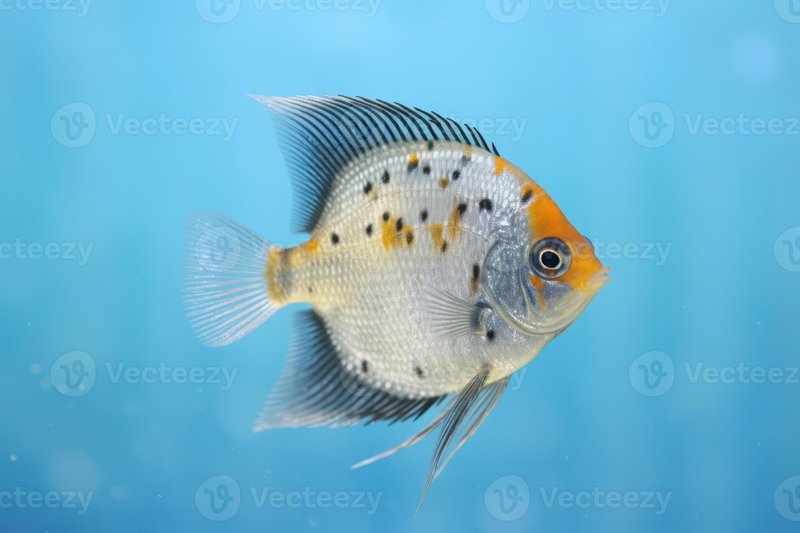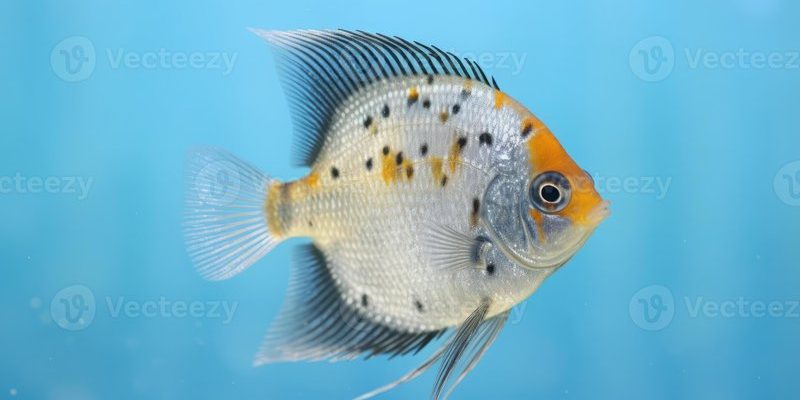
Think of it this way: navigating and communicating in the fish world is similar to how we use language and body movements to express ourselves. Just as we might use gestures to emphasize what we’re saying, angelfish use their bodies and fins to send signals to their companions and predators. Let’s dive a little deeper into how these tropical beauties manage their daily lives underwater.
Understanding Angelfish Navigation
Angelfish are known for their incredible swimming abilities. These fish navigate their environment using a combination of instinct, learned behaviors, and their sensitive sensory systems. When you think about it, navigating in water is quite different from moving around on land. Water can distort vision, making it tricky to judge distances and direction, but angelfish have adapted to these challenges.
One of the most critical aspects of angelfish navigation is their lateral line system. This specialized sensory organ runs along the sides of their bodies, allowing them to detect changes in water currents, pressure, and even vibrations. Imagine having a sixth sense that helps you feel what’s happening around you without actually seeing it—this is what gives angelfish an edge in their underwater world.
Also, angelfish use landmarks in their environment, such as rock formations or plants, to help orient themselves. They can remember these landmarks as they swim, much like how we recall familiar streets and buildings. This ability is crucial, especially in the wild, where they need to find safe hiding spots or look for food.
How Angelfish Use Body Language
Angelfish are skilled communicators, but instead of words, they rely on body language. You might be wondering how fish express themselves without vocal cords! Well, just as dogs wag their tails to show excitement or happiness, angelfish use various movements and colors to convey their feelings.
For instance, when an angelfish feels threatened, it might change its color intensity or posture. A more vibrant color can signal that it’s healthy and ready to mate, while a darker shade might indicate stress or fear. The way they unfold their fins can also display moods—spreading them wide can be a sign of aggression or territory defense.
In addition to body posture and color changes, angelfish also interact through swimming patterns. If a pair is courting, you might observe them swimming close together, mirroring each other’s movements. It’s a beautiful spectacle that illustrates their connection and communication.
Vocalizations: Sounds in the Fish World
While it’s true that angelfish don’t speak in the traditional sense, they do make sounds to communicate. Researchers have discovered that fish, including angelfish, produce noises by vibrating their swim bladders. This phenomenon is somewhat like how humans produce sound using vocal cords.
These sounds can vary, serving different purposes—some might be used to attract a mate, while others might signal alarm or distress. Angelfish, for example, might make a soft, clattering noise when they’re excited or to warn others of danger. It’s fascinating to think that even in the underwater world, where silence reigns, there’s still a language happening beneath the waves.
To us, these sounds may be subtle or hard to notice, but they play a significant role in angelfish social interactions. It’s a reminder that communication isn’t just about visuals; it can also be auditory, even in the least expected places.
Territorial Behavior Among Angelfish
Angelfish are known to be quite territorial, particularly during breeding season. This means they establish and defend specific areas in their environment. Think about how humans might set boundaries in their homes or neighborhoods; angelfish do something similar in their aquatic territories.
The process of marking territory often involves a combination of physical displays and sounds. An angelfish might swim aggressively towards intruders, showing off its fins to appear larger and more intimidating. Sometimes, they might even chase other fish away from their designated area. It’s like a dance-off, where the winner gets to keep the most desirable spot!
This territorial behavior is critical not just for breeding but also for finding food and safety. A well-defended space means access to resources and a secure environment, which is vital for the survival of angelfish and their fry (baby fish).
The Role of Angelfish in the Ecosystem
Beyond their stunning appearance and social behaviors, angelfish play an essential role in their ecosystems. As both prey and predator, they help maintain balance in their aquatic environments. When you think about it, every fish, no matter how small, has a part to play in the grand tapestry of life in the water.
Angelfish primarily feed on small insects, zooplankton, and algae, contributing to controlling these populations. In return, they become food for larger predators, helping sustain the food chain. This interdependence highlights how interconnected our natural world is, even in a seemingly simple setting like a coral reef.
By maintaining their habitats and balancing populations, angelfish contribute to the overall health and diversity of marine ecosystems. So, every time you see one of these colorful fish darting around, remember they’re not just swimming—they’re actively participating in a bustling underwater community.
Challenges angelfish Face in Their Environments
While angelfish are remarkable creatures, they do face challenges in their environments. Factors such as pollution, habitat destruction, and climate change can threaten their populations. You might be thinking, “But what can I do about it?” It turns out, every little action counts.
For instance, aquarists who keep angelfish as pets can contribute to their well-being by providing them with a proper habitat. This means ensuring clean water, suitable tank mates, and proper nutrition. Additionally, supporting conservation efforts can help protect wild populations and their natural habitats.
Understanding the struggles these fish face can also inspire us to take action. Whether it’s reducing plastic use, supporting sustainable seafood initiatives, or simply spreading awareness, we can all play a part in safeguarding the future of angelfish and the ecosystems they inhabit.
In conclusion, angelfish are much more than just pretty faces in the aquarium. Their unique ways of navigating and communicating showcase the complexity of life beneath the waves. From their sensitive lateral line systems and body language to their vocalizations and territorial behaviors, angelfish have developed a rich repertoire of skills to thrive in their environments.
We’ve seen how these beautiful fish play vital roles in their ecosystems, yet they face numerous challenges head-on. By understanding and supporting their needs, we can help protect these amazing creatures and the underwater worlds they call home. So, next time you see an angelfish, take a moment to appreciate the intricate dance of life happening right before your eyes!

